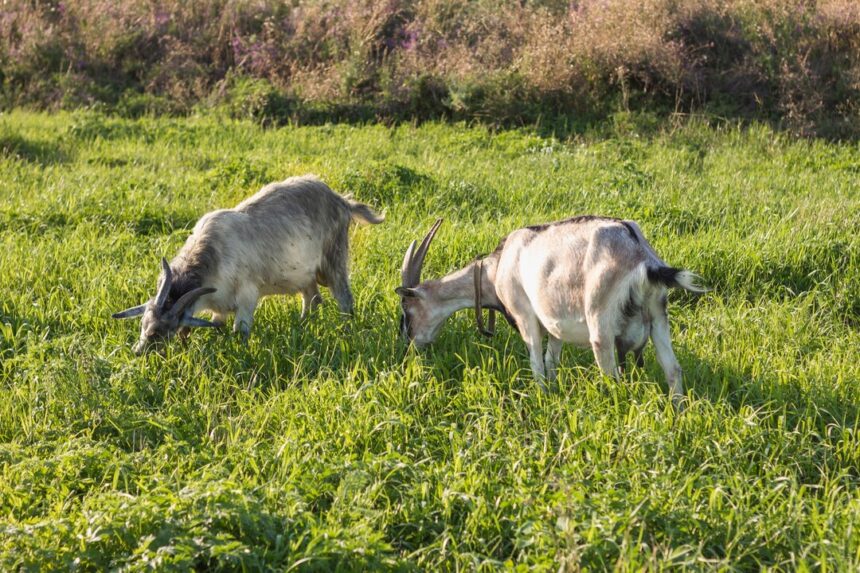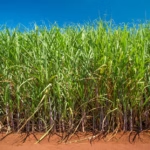In recent years, goat grazing has emerged as a sustainable and eco-friendly solution for managing vegetation and restoring degraded landscapes. This age-old practice harnesses the natural browsing behavior of goats to control weeds, reduce fire risk, improve soil health, and promote biodiversity. As concerns about environmental sustainability and land management continue to grow, goat grazing offers a holistic approach that benefits both ecosystems and communities. Let’s explore the significance of goat grazing as a sustainable land management solution.
1. Natural Vegetation Management:
Goat grazing leverages the innate browsing instincts of goats to selectively consume a wide variety of vegetation, including grasses, shrubs, and weeds. Unlike mechanical equipment or chemical herbicides, goats target specific plant species while leaving desirable vegetation intact, promoting a more balanced ecosystem.
2. Weed Control:
Goats excel at controlling weeds, including invasive species that can outcompete native plants and degrade natural habitats. By grazing on weeds, goats help prevent their spread and dominance, allowing native vegetation to thrive and restore ecological balance.
3. Fire Risk Reduction:
In fire-prone areas, goat grazing can serve as a proactive measure to reduce fuel loads and minimize the risk of wildfires. By consuming dry grasses and brush, goats create firebreaks and mitigate the spread of flames, protecting both natural ecosystems and human communities.
4. Soil Health Improvement:
Goat grazing has positive impacts on soil health, as goats’ hooves aerate the soil and their manure provides valuable organic matter and nutrients. This enhances soil fertility, moisture retention, and microbial activity, leading to improved plant growth and resilience.
5. Biodiversity Enhancement:
By selectively feeding on vegetation, goats create openings in dense vegetation and promote the regeneration of diverse plant species. This, in turn, attracts a variety of wildlife, including insects, birds, and small mammals, fostering greater biodiversity within the ecosystem.
6. Low Environmental Impact:
Compared to traditional land management practices such as mowing, herbicide application, or mechanical clearing, goat grazing has minimal environmental impact. It reduces the need for fossil fuel-powered machinery and eliminates the use of chemical pesticides, preserving air and water quality.
7. Cost-Effectiveness:
Goat grazing can be a cost-effective alternative to conventional vegetation management methods, especially in areas where access is limited or terrain is rugged. Goats require minimal infrastructure and can access steep slopes, rocky terrain, and other challenging landscapes with ease.
8. Community Engagement and Education:
Goat grazing projects often involve community participation and engagement, providing opportunities for education and awareness about sustainable land management practices. Community members can learn about the ecological benefits of goat grazing and actively contribute to environmental stewardship efforts.
9. Cultural Heritage Preservation:
In many cultures around the world, goats have long been valued for their role in sustainable land management and livelihoods. Embracing goat grazing practices honors traditional knowledge and promotes the preservation of cultural heritage while addressing contemporary environmental challenges.
10. Scalability and Adaptability:
Goat grazing is a scalable and adaptable solution that can be implemented in a variety of landscapes, from rural rangelands to urban green spaces. It can be tailored to specific land management objectives and integrated into broader conservation and restoration initiatives.
As global concerns about environmental degradation and climate change escalate, the role of goat grazing in sustainable land management is becoming increasingly recognized and valued. By harnessing the natural browsing behaviors of goats, communities can restore degraded ecosystems, mitigate wildfire risk, and promote biodiversity while fostering resilience in the face of environmental challenges. As we continue to explore innovative solutions for land management, goat grazing stands out as a time-tested and environmentally sound approach that offers both ecological and social benefits.








